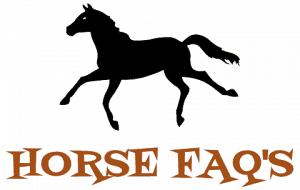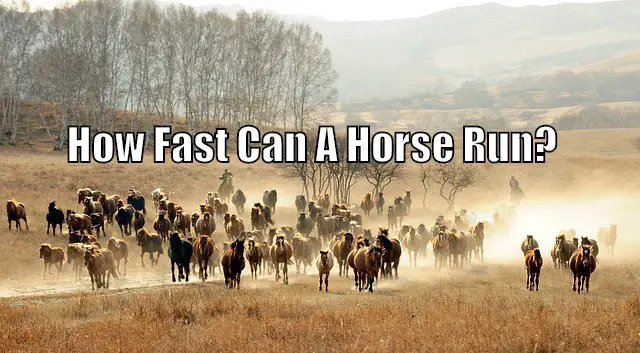Horses are of different breeds, age, and size. All these factors influence speed just like in human. Some are more oriented for races while others are not depending on location and nutrition.
So how fast can a horse run? The top recorded speed for a horse is 55 mph. Some gallop as low as 30 kph. It is about the breed and type of the horse.
A horse may not be the fastest animal on land but it is naturally built to cover long distances. It can move faster depending on the ground and training. It also depends whether it is a domestic or wild horse because the two perform differently on different terrains. Wild horses are familiar with adverse terrains unlike domestic horses that are used to soft ground.
If you are new to horse racing, it is important to understand different kinds of breeds and their capabilities before identifying your racing partner. Although horses are known for speed, not all of them will help you achieve high speeds, especially in a competition. Even with training, you need a horse with natural potential.
How is horse speed compared to other animals?
Comparing animal speed can be challenging because some are best on water while in the air. To be fair with horses, comparison should only be with land animals. Still, domestic horses cannot compare to wild animals that have no option other than to run for survival on a daily basis.
Nevertheless, here are among land animals with top speeds
- Ostrich 43mph
- Wildebeest 43mph
- Coyote 43mph
- African wild dog 43mph
- Deer 43 mph
- Domestic dog 50mph
- Horse 55mph
- Impala 56 mph
- Antelopes 59 mph
- Pronghorn 62 mph
- Cheetah 75 mph
How is a cheetah different from a horse?
A Cheetah performs best in short distances when dashing to catch prey for dinner. There are few instances of cheetahs covering long distances at the top speed. Nevertheless, they still tank the highest with 75 mph. Nothing beats the cheetah on land.
In comparison to a horse, a cheetah is has extra powerful muscles on the legs for easy stretching. It can also easily flatten out hence comfortable on any rough terrain. IN fact, it performs best on uneven surfaces considering it is naturally wild. The long tail helps in balancing the lean body structure of a cheetah.
The sharp claws of a cheetah help it to make fast turns even when on high speed. It has a grip on the ground every time hence efficient in catching prey. Cheetahs don’t race; it is about sprinting in one or two minutes to catch. Additionally, most of the time a Cheetah is in solitary life and spending time on rest. It is a way of preserving energy for quick sprints.
A horse can hit and sustain the 55 mph speed for a longer time. Unlike a cheetah that doe sit for few minutes, horses are little slower but can sustain the speed and cover more ground. A horse’s structure is also different. The legs can be best associated with a pogo stick that uses energy in muscles and tendons. Energy is stored in these tissues to enhance the forward and upward movement of the legs.
Long and stiff horse legs are much slower because of the frequency of hitting the ground and bouncing back. Such horses are likely to be injured while moving fast. Most horses with fast speeds have shorter and flexible legs. The richer the muscle the easier the bouncing back force.
Sometimes, the speed has more to do with the horse’s body structure and breed. Horse speed also has to do with the rider; positioning of the rider can reduce or increase the speed. The best position for racing on a horse is on a crouching position; the body should be in sync with the horse body structure, which naturally streamlines with the wind. Wind is the main resistance. If a rider can sync with the speed and crouch, the horse can be 7% faster. Bending forward and surfing the horse is also a speed strategy.
How far can a horse run?
Distance is not an issue with most horses. Unless you have been keeping it at home on soft ground and suddenly you want it to cover 200 miles on high speed. It won’t work.
With a top speed of 55 mph, a horse can cover ground of up to 70 miles while maintaining the speed. Of course, ground cover and speed maintenance multiple factors. The type of terrain, obstacles, and turns may necessitate decrease of speeds for easy maneuvering. Nevertheless, a wild horse that is running from danger can maintain such a speed for a more miles just to keep safe.
Horses on racing tracks may not perform well with regards to speed in the wild. Domestic horses need familiar ground to reach the top speed. Therefore, there are several factors to consider in measuring ground cover for fast horse.
Summary
Horses are the fastest domestic animals probably followed by dogs. The speed can differ from one horse to another depending on the breed, how you feed it, and environment. Horses in dry land have different body structures than in the tropics, which influence speed.
If you ever want to witness this speed go to a race like the Kentucky Derby which is great. The other place is going to a rodeo and watching Barrel Racing. The NFR is of course nationally televised I think it is CBS Sports Network and is on in December.
With Barrel Racing it is amazing to watch how graceful this big animals can be while turning on a dime around these barrels. Of course the cross country rides and jumping are amazing. There is no limit to what these animals can do and have done. They are such a big part of our history no matter where you live.
So enjoy jump on youtube even and check them out. The best ones are the POV where it feels like you are the rider going around barrel racing and there is even some riding first hand at the big races like the Kentucky Derby.

